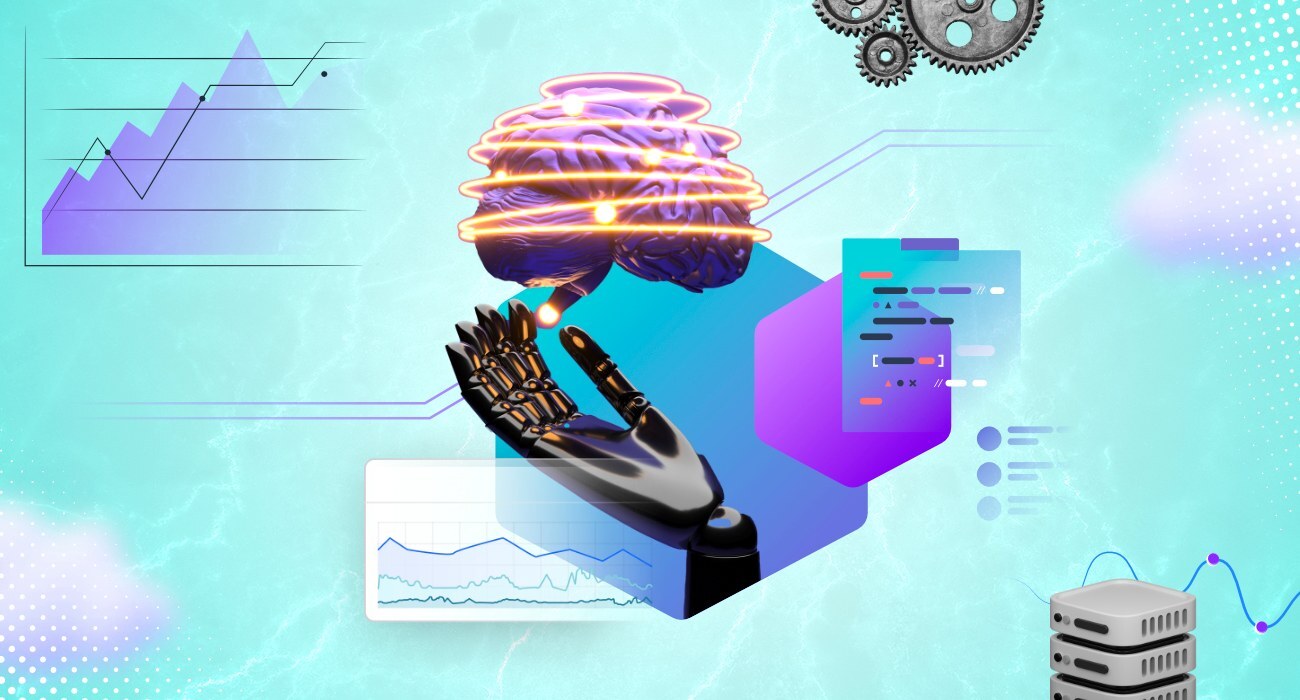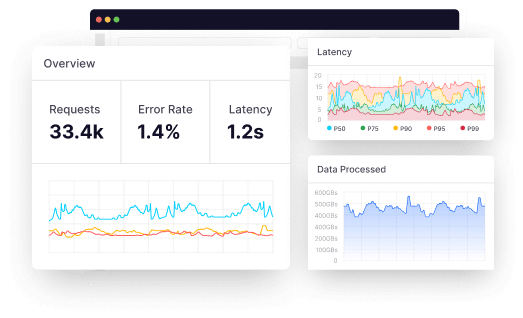From the inception of the World Wide Web in the early 1990s to the groundbreaking debut of the iPhone in 2007, innovation has catalyzed monumental leaps forward, ushering in new eras of progress and transforming industries beyond recognition.
These groundbreaking technologies have not only disrupted industries but have also generated trillions in shareholder value. However, innovation is relentlessly accelerating, forging a perpetual cycle of change and discovery.
Enter Generative AI (Gen AI), the latest jewel in the crown of technological innovation. With the remarkable ability to create novel data patterns from existing ones, Gen AI stands as a formidable force poised to reshape countless industries. It can craft lifelike images, generate context-aware text, and process data at previously deemed unattainable speeds.
In 2023, Gen AI took the tech world by storm, captivating tech enthusiasts, futurists, and mainstream audiences with its uncanny ability to produce remarkably human-like content. Its impressive applications stem from its training on massive datasets. GPT-4, the engine powering ChatGPT, reportedly underwent training on over one trillion parameters.
Other large language models (LLMs), such as Google’s PaLM2 and DeepMind’s Gopher, train on hundreds of billions of parameters. Rumors are heating up that GPT-5 could be on the horizon, and we should expect another significant leap in terms of size. Increasing the dataset size isn’t the only way to make an LLM smarter, but so far, it has proven to be the most reliable way of achieving improvements.
In the business world, Gen AI is already making significant strides. According to McKinsey, organizations are increasingly integrating generative AI into their operations.
One-third of all respondents reported that their organizations regularly use it in at least one function. This means that 60 percent of organizations with said AI adoption are utilizing Gen AI. Notably, 40 percent of those indicating AI adoption in their organizations expect to invest more in AI overall. Additionally, 28 percent state that Gen AI use is already on their board’s agenda.
Businesses are applying these innovative tools across various functions, with marketing and sales, product and service development, and service operations, such as customer care and back-office support, leading the way as the most common applications.
Furthermore, the rising demand for Gen AI products may generate around $280 billion in new software revenue, driven by specialized assistants, innovative infrastructure products, and coding acceleration copilots.
Leading technology companies like Amazon Web Services, Microsoft, Google, and Nvidia stand to benefit significantly as enterprises increasingly migrate workloads to the public cloud.
Bloomberg Intelligence (BI) foresees a remarkable transformation unfolding within the generative AI landscape. It accounts for less than 1% of total spending in IT, software services, advertising, and gaming markets. In a decade, the industry is projected to grow from $40 billion in 2022 to an astonishing $1.3 trillion by 2032, fundamentally reshaping technology trends and becoming an integral part of IT budgets, advertising strategies, and cybersecurity, driven primarily by Gen AI infrastructure-as-a-service, digital advertising, and specialized assistant software, which are expected to surge this share to 10%.
Generative AI’s Infiltration into Observability
Observability is a critical practice in monitoring systems, offering insights into system behavior and diagnosing issues. Its role in ensuring the seamless operation of production systems is paramount. With Gen AI gaining ground, the observability domain faces the impetus to adapt to fresh challenges and seize new opportunities.
Generative AI’s integration into observability marks a pivotal moment in delivering actionable insights to users, poised to revolutionize the observability landscape. It can analyze vast datasets efficiently, allowing organizations to make data-driven decisions that optimize software systems for superior performance.
According to the 2023 Observability Forecast, achieving full-stack observability remains a challenge for most organizations (67%), but those that have embraced it have witnessed significant improvements in service-level metrics. Full-stack observability has led to fewer and shorter outages, resulting in lower outage costs.
Moreover, organizations are increasingly recognizing the business value of observability. Respondents in the survey reported receiving a median return of $2 for every $1 of investment in observability. A staggering 86% of respondents acknowledged the value derived from their observability investment, with 41% reaping annual values exceeding $1 million. This clear demonstration of the business benefits of observability underscores its importance.
By mid-2026, a significant industry shift in monitoring technology approaches is expected, with organizations deploying all 17 distinct observability capabilities, reaching an anticipated adoption rate of 82%.
Integrating Gen AI into observability further simplifies the ecosystem by alleviating complexities associated with accessing critical insights. Users will no longer need expertise in intricate query interfaces to unearth valuable data.
Generative AI effortlessly delivers pertinent insights and recommendations directly within the observability solution. This automation streamlines operations, enhances decision-making, and accelerates issue resolution, ultimately bolstering system uptime and reliability.
Organizations can realize generative AI’s true potential by going beyond its application in chatbots and language processing and instead by leveraging the right data sets within their engineering teams.
The future of observability is already here, and solutions built on generative AI can create a single source of truth, break down silos, deliver better business outcomes, and enable knowledge workers to work smarter, not harder.
The Merits of Generative AI in Observability
Integrating Generative AI into observability solutions provides several significant advantages, with the expeditious identification of root causes being the most prominent.
Traditional observability solutions served as the singular repository for insights into system health. Generative AI eliminates the need for engineers to navigate between various tools. Instead, users can directly access relevant insights within the observability solution.
Seamless Insights
Generative AI presents the opportunity to reduce engineers’ workload drastically. Engineers can pivot their focus toward more strategic responsibilities by automating routine tasks, offering recommendations, and simplifying intricate procedures.
Furthermore, it has the potential to parse tacit knowledge within organizations, bridging expertise gaps and amplifying collaboration.
Automation in Error Resolution
Another promising development that might arise from Generative AI’s presence in observability is automation. Engineers could instruct AI-powered assistants to effectuate recommendations autonomously, significantly curtailing the interval between issue detection and resolution.
This automated approach to error management holds the promise of substantially bolstering system uptime and reliability.
Impact on Observability Solution Providers
Including Generative AI in observability solutions brings a new set of challenges and opportunities for solution providers. Traditional observability solutions handle structured data, while Gen AI primarily operates on unstructured data.
This transition necessitates a cohesive partnership between AI technology providers and observability solution vendors.
Building a Data Moat
Establishing data technology partnerships is paramount as Generative AI-powered observability solutions take center stage. Solution providers must adapt their systems to accommodate unstructured data while closely collaborating with AI technology firms to harness the full potential of AI-driven insights.
The Need for Ethical Frameworks
The burgeoning prominence of AI in observability mandates a concerted effort to define ethical frameworks governing its deployment. Organizations must establish clear guidelines for the ethical utilization of AI in monitoring and root cause analysis.
These guidelines should ensure transparency in AI-driven processes and adherence to stringent privacy regulations, thus safeguarding user data.
Pioneering the Path of “Inferencing”
As Generative AI revolutionizes observability, it brings forth a new paradigm—Inferencing.
Inferencing represents a profound departure from the conventional approach to observability, transcending mere monitoring to embrace a predictive and prescriptive model.
The Essence of Inferencing
Inferencing amalgamates Gen AI with real-time data analysis, identifying issues and furnishing insights into potential root causes. Its primary objective is to abbreviate the mean time to resolution (MTTR) by offering precise and actionable recommendations, thereby closing the chasm between issue detection and resolution.
An AI-Native Architecture
To realize the aspirations of Inferencing, observability solutions must cultivate an AI-native architecture. Design this architecture to effectively handle unstructured data, adapt to changing data sources, and swiftly process information. Additionally, ensure that observability solutions include flexible data collection, processing, and storage customized for AI-driven analytics.
Streamlining User Interface
A streamlined and interactive user interface is equally critical in Inferencing. Empower users to interact with the system, ask questions, and receive instant responses and recommendations.
This pivot towards more intuitive interfaces promises to democratize observability, extending its accessibility to a broader spectrum of personnel within organizations.
The Tenets of Inferencing
Inferencing beckons a paradigm shift in observability principles. Organizations should pledge allegiance to core tenets to embrace this novel approach.
- AI-Native Architecture: Architecting observability solutions necessitates seamlessly integrating generative AI and inferencing from the ground up. This requires an architecture that exhibits flexibility in handling data, agility in processing, and scalability.
- Adaptive Data Handling: The evolving data landscape demands that observability solutions exhibit adaptability. Gen AI mandates the capability to process a panoply of data formats and sources, ensuring that no critical insights evade detection.
- Streamlined User Interface: The user interface should exude user-friendliness and intuitiveness, permitting users to interact fruitfully with the system. Integrating natural language processing and AI-driven chatbots can expedite and simplify user-system interactions.
- Ethical Deliberations: As is incumbent with any AI technology, ethical considerations take center stage. Organizations must delineate unambiguous guidelines for AI utilization, ensuring transparency and adherence to privacy regulations.
- Continual Learning: Inferencing is not a one-time implementation; it necessitates perpetual learning and refinement. Organizations must invest in training data, fine-tuning models, and staying updated with AI advancements.
Crafting AI-Centric Strategies
The rush to implement Gen AI demands substantial investments in observability products to monitor and maintain these newly acquired capabilities.
Key facets of AI integration, including competing with formidable language models, fine-tuning models, and establishing efficient feedback loops, will drive the demand for advanced observability solutions.
These solutions must be specifically tailored to address the unique challenges posed by AI-powered technologies to ensure the uninterrupted functionalities.
As things stand, prominent organizations in the observability sphere are actively developing new generative AI solutions to automate the monitoring, visualization, and analysis of intricate systems. These innovations are on the cusp of revolutionizing our approach to system diagnostics and error resolution.
Ushering a New Era of Observability
Generative AI is poised to have a profound impact on the observability sector. Its capacity to generate data, automate workflows, and provide actionable insights is driving a paradigm shift in how organizations monitor and maintain their systems.
As the adoption of Generative AI continues to rise, we are on the cusp of a new era in observability – one characterized by Inferencing. Organizations that fully embrace generative AI and Inferencing will likely find themselves better equipped to navigate the complexities of modern technology.
This can lead to reduced downtimes, enhanced system reliability, and a competitive edge within their industries.
Yet, ongoing tech industry mergers and acquisitions are compelling organizations to revamp IT management strategies, potentially intensifying the demand for cost-effective cloud-based observability platforms.
This poses a critical challenge for Gen AI solution developers, who must exhibit unwavering agility, foster relentless innovation, and champion unwavering ethical standards to drive the democratization of AI-driven observability. In rising to this challenge, they have the potential to reshape the future of observability for the better.





